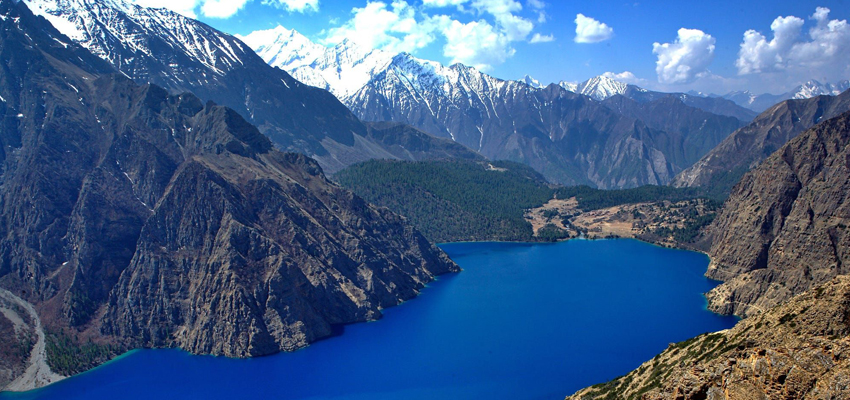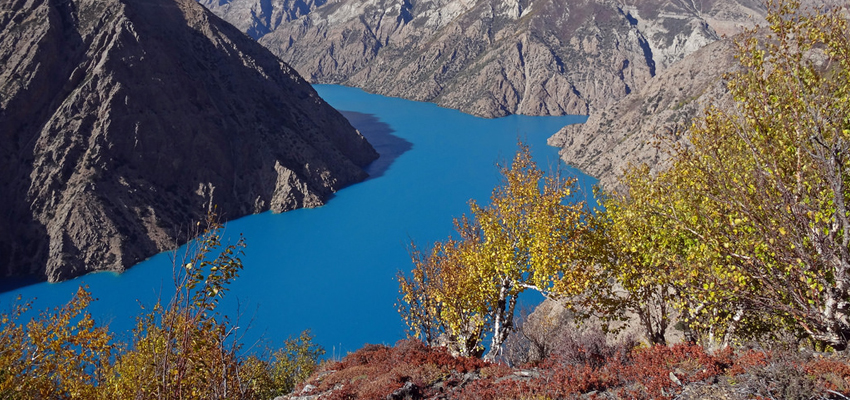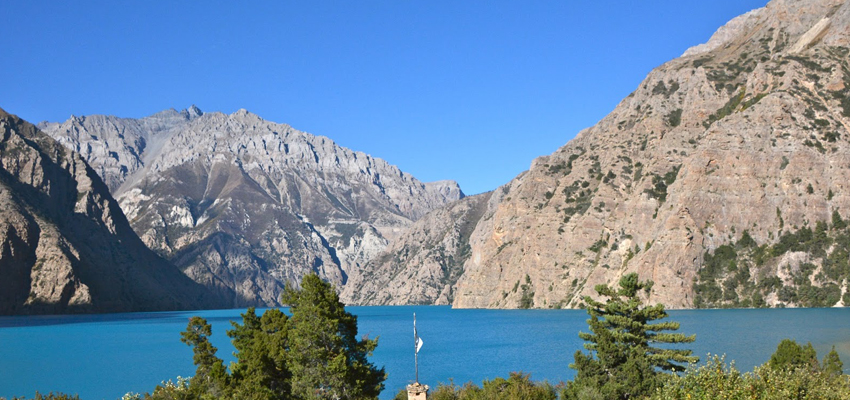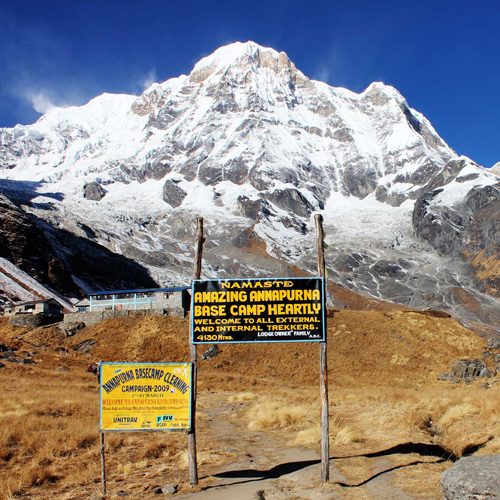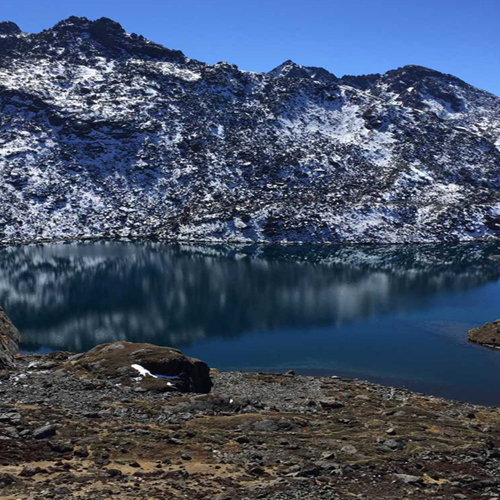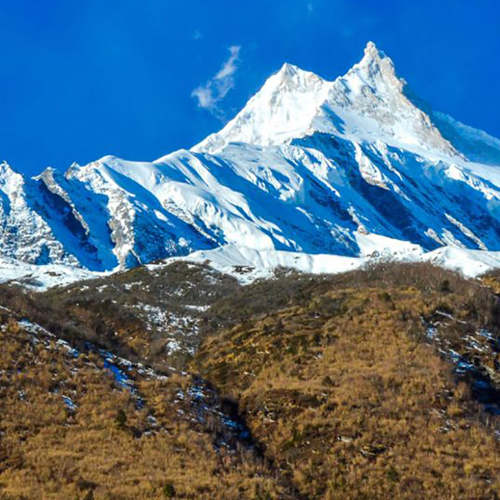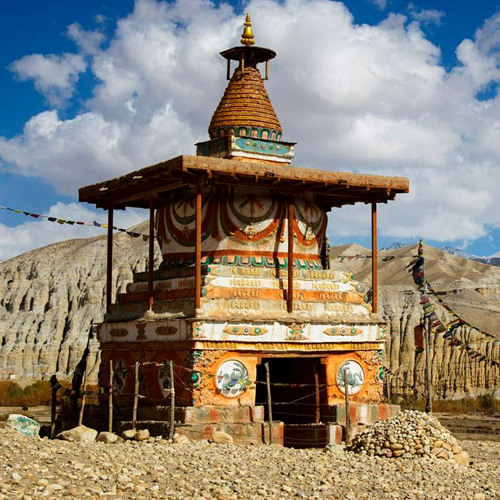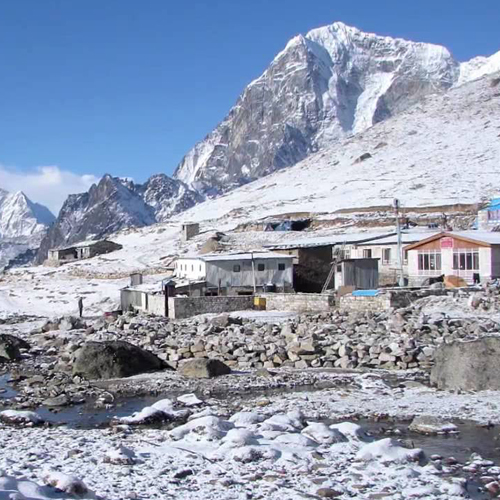Day 1: Kathmandu-Nepalgunj.
The regular 55 minutes flight on a Jetstream/Beech aircraft arriving in Nepalgunj. The overnight accommodation and meals are arranged at a local hotel. Nepalgunj is a border town in the Western Terai with extremes in climate.
Day 2: Nepalgunj-Jufal-Dunai
40 minutes scheduled or chartered flight to Jufal, an only STOL in Dolpo, departs early morning to avoid the harsh afternoon winds that blow through the high passes of Mahabharata range. Trekking begins from Jufal bound to Dunai. The 9.6 kms stretch passes through a Dalit village. The first two hours is steep downhill to arrive at the foothill on the bank of Bheri river. Then continue along the right bank of Bheri to reach Dunai. (4 hours)
Day 3: Dunai-Chepka.
Start early after breakfast; cross Bheri on a suspension bridge in Dunai and continue walking towards Suligad, confluence of Bheri and Suli river. Check into the Shey Phoksundo National Park office for registration. The upriver trail is mostly through shrubs and on precipice mostly exposed to the morning sun. At Kageni cross a wood bridge and continue uphill on the left above 150 feet of Suli. The narrow trail leads to a wide riverside winter sheds of B’onpos from Ringmo called Jalash. The gradual uphill on the precipice and through a shade of Maple, Oak and Pine and then a quick mild descend to a wood crossing. From here to Chepka is a strenuous 1.5 hour bit of an uphill for the day crossing a smaller rivulet at Shyangta. (7 hours)
Day 4: Chepka-Sunduwa
Today is a real test for endurance. There are 3 major uphills and downhills at places where the gullies run deep and narrow. The trail narrows and are often found squandered by larger beasts of burdens at certain places. The first 2 hours from Chepka is a comfortable hike through the giant pines, oaks, maple, walnut, and Birch. The trail is wider and mostly along the river bank. In the mornings the damp dark soil often captures footprints of larger mammals, primates, and horned herbivores. At Reiji there is a lone abandoned bungalow and a camping site. Continue upriver crossing a smaller rivulet. The trail widens miraculously to reach Boarding. Camps are set in a green pasture overlooking the high peaks. (8 hours)
Day 5: Sunduwa-Ringmo
Today is the shortest yet most exhilarating of the entire trek. The altitude crosses 3000 meters and the trail on the precipice is narrow and steep with confusing runoffs of loose soil and inhospitable rocks. The vegetation changes dramatically with presence of sparse Juniper shrubs and a few Cypresses. The steep climb definitely burns calories but reaching waterfall viewpoint is rewarding. The 270? view of beautiful terraced farms of Reike, Sunduwa and the nearby mountains is quite breathtaking. About 30 meters above this point on the trail ends the climb and also graces the first sneak peek of turquoise Shey Phoksundo Lake. From here to the camping site at lakeside is only 25 minutes of easy downhill through pine groves, chortens, and the village of Ringmo.
Day 6: Guided tour of Ringmo and orientation on B’on at the monastery.
The village of Ringmo (3640m) lies on the bank of Shey Phoksundo Lake. About 20 Tibetan style houses cluster in a close knit fashion to form the village surrounded by scattered cairns and Chortens. The people of Ringmo are B’onpos, the followers of B’on tradition. They are subsistence farmers and also raise Yaks, Dzos, and some horses. B’onpos are strict adherents of nonviolence and hence refrain from any form of animal sacrifices. During the harvesting season, women and children work in the fields while the men folks cross the high mountain passes to reach China border for trade. It is quite a relief to see not a single person clad in jeans and modern appliances and means of communication are close to non-existence. The lifestyle is traditional and simple.
There is an old B’on monastery in Ringmo. The chortens at the entrance of the monastery is fascinating for it has large horns of either Blue Sheep or Himalayan Thar. There is also a small museum at the monastery. The Lama will kindly guide you through the monastery and briefly speak about B’on.
Day 7: Guided hike to Lake viewpoint/Caravan Yak Drop OR guided tour of waterfall and Amchi healing center.
A. The shape of Shey Phoksundo Lake resembles a lowercase Latin alphabet “r”. Since the camping site is on the southern bank and the high mountains encircle the lake the best spot to view the entire lake is from the viewpoint about 200 meters above the village. The hike to the viewpoint passes through the Yak Drop point as featured in Eric Valley’s “CARAVAN”, on through a pine grove and a steeper ascent. It certainly feels like paradise to be here! (5 hours)
B. Shey Phoksundo Lake is drained out by a river that creates a forceful waterfall half way through Sunduwa and Ringmo. This waterfall is perhaps one of the majestic in Nepal. The crystal clear water of Phoksundo forms a dramatic giant cotton ball effect while making a thunderous landing about 100 feet below. The vegetation around the waterfall is rich with thick pine forest. Musk deers, Blue Sheep, Himalayan Thar, and the rare Snow Leopards are also sighted around the waterfall.
“Amchis” are the traditional healers of Dolpo. Their practice is still largely prevalent in upper Dolpo. The Amchis use variety of natural herbs and minerals to cure illnesses. Recognizing the utility of Amchis and in an effort to promote the understanding of traditional indigenous medicine an Amchi hospital is setup in Sunduwa. A tour of this facility and a chit chat with the practitioners is a unique experience! (6 hours)
Day 8: Ringmo/Sunduwa-Chepka
The downhill from Ringmo to Sunduwa is quite steep. A lone lammergier can be sighted on top of the ridge. Otherwise, the hike is pleasant. (5 hours)
Day 9: Chepka-Jufal
Start early after breakfast. There are no major uphills or torturous downhill except for the last 2.5 hours stretch to Jufal. The distance covered today is quite a conquest.
Day 10: Jufal-Nepalgunj-Kathmandu
Flights to Nepalgunj depart early morning and transfers to Kathmandu are arranged accordingly.

